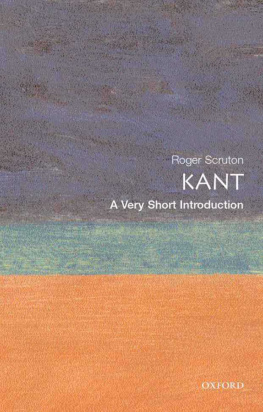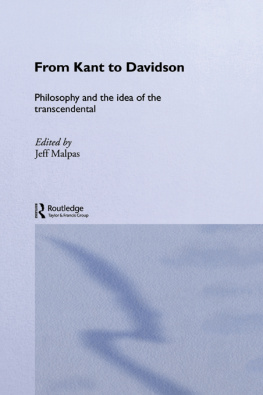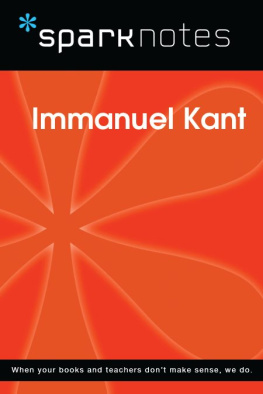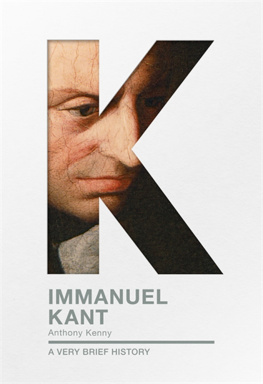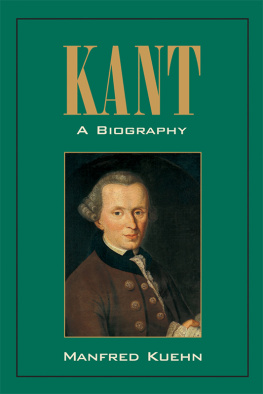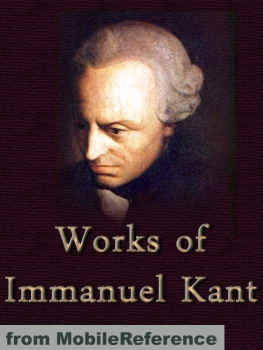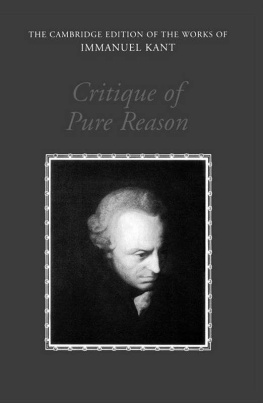Kant Immanuel - Kant: a complete introduction
Here you can read online Kant Immanuel - Kant: a complete introduction full text of the book (entire story) in english for free. Download pdf and epub, get meaning, cover and reviews about this ebook. City: London, year: 2014, publisher: Hodder & Stoughton;Teach Yourself, genre: Religion. Description of the work, (preface) as well as reviews are available. Best literature library LitArk.com created for fans of good reading and offers a wide selection of genres:
Romance novel
Science fiction
Adventure
Detective
Science
History
Home and family
Prose
Art
Politics
Computer
Non-fiction
Religion
Business
Children
Humor
Choose a favorite category and find really read worthwhile books. Enjoy immersion in the world of imagination, feel the emotions of the characters or learn something new for yourself, make an fascinating discovery.

- Book:Kant: a complete introduction
- Author:
- Publisher:Hodder & Stoughton;Teach Yourself
- Genre:
- Year:2014
- City:London
- Rating:5 / 5
- Favourites:Add to favourites
- Your mark:
- 100
- 1
- 2
- 3
- 4
- 5
Kant: a complete introduction: summary, description and annotation
We offer to read an annotation, description, summary or preface (depends on what the author of the book "Kant: a complete introduction" wrote himself). If you haven't found the necessary information about the book — write in the comments, we will try to find it.
Kant: a complete introduction — read online for free the complete book (whole text) full work
Below is the text of the book, divided by pages. System saving the place of the last page read, allows you to conveniently read the book "Kant: a complete introduction" online for free, without having to search again every time where you left off. Put a bookmark, and you can go to the page where you finished reading at any time.
Font size:
Interval:
Bookmark:


This Complete Introduction from Teach Yourself includes a number of special boxed features, which have been developed to help you understand the subject more quickly and remember it more effectively. Throughout the book you will find these indicated by the following icons: | |
 | The book includes concise quotes from the philosopher under discussion in each chapter. They are referenced so that you can include them in essays if you are unable to get your hands on the source. |
 | The key ideas are highlighted throughout the chapters, and distil the most important points and thoughts. If you have only half an hour to go before an exam, scanning through these would be a very good way of spending your time. |
 | The study questions at the end of each chapter are designed to help you ensure that you have taken in the most important concepts from the chapter. Answers are not supplied, as the questions are intended to be starting points for further study. |
 | The spotlight boxes offer interesting or amusing anecdotes to help bring the philosophers and their ideas to life. |
 | The dig deeper boxes give you ways to explore topics in greater depth than is possible in this introductory level book. |


Font size:
Interval:
Bookmark:
Similar books «Kant: a complete introduction»
Look at similar books to Kant: a complete introduction. We have selected literature similar in name and meaning in the hope of providing readers with more options to find new, interesting, not yet read works.
Discussion, reviews of the book Kant: a complete introduction and just readers' own opinions. Leave your comments, write what you think about the work, its meaning or the main characters. Specify what exactly you liked and what you didn't like, and why you think so.

